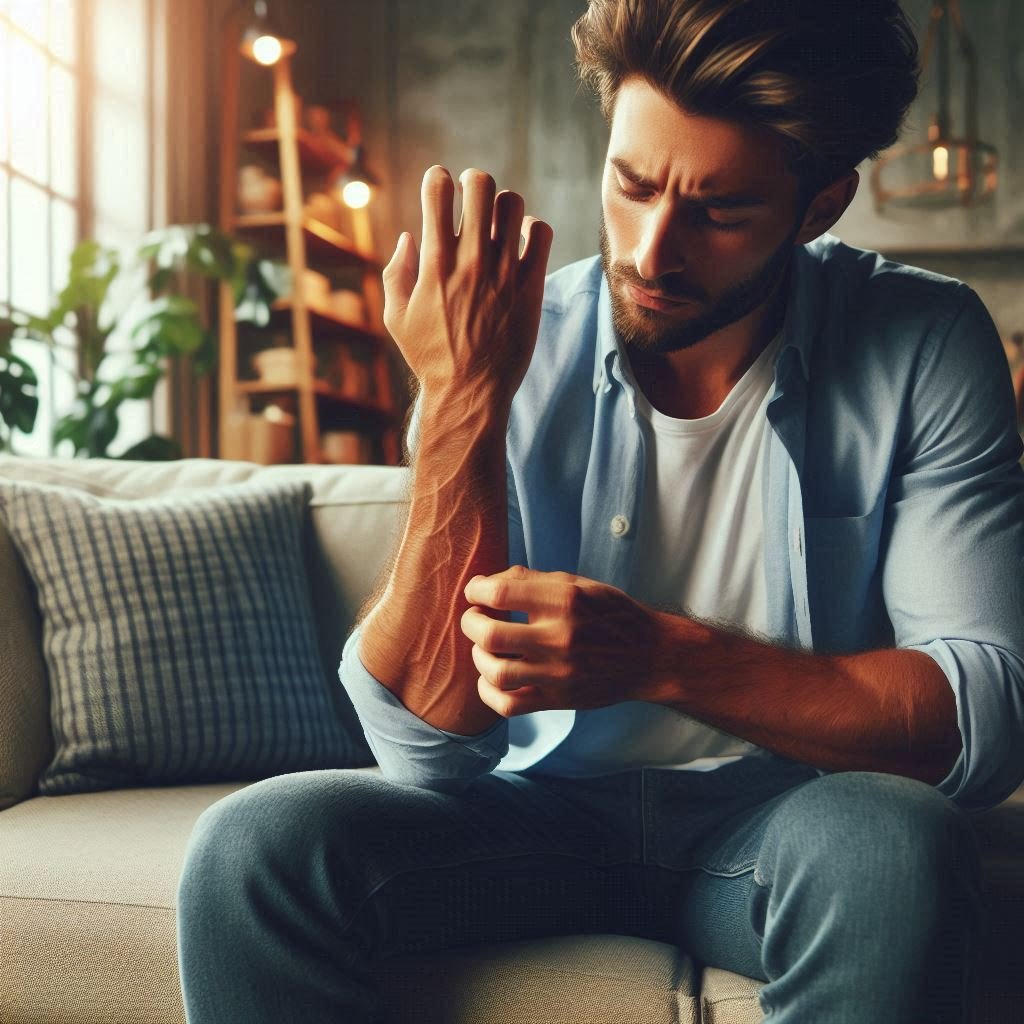
Lichen nitidus is a relatively rare, chronic skin eruption. Lichen nitidus may affect anyone, but typically develops in children and young adults. Lichen nitidus is a benign disease with no associated mortality or complications. The cause of lichen nitidus is unknown. It consists of tiny, skin-colored bumps (papules) that often appear in clusters on the surface of your skin, especially on the arms and legs. Even without treatment, lichen nitidus usually disappears over time. The papule of lichen nitidus consists of a lymphohistiocytic inflammatory cell infiltrate that lies in close proximity to the epidermis and is associated with basal cell hydropic degeneration. Certain parts of the body are more affected like trunk, arms, and genitals. Sometimes it can be seen in palms, soles or inside the mouth. Lesions are often found on the forearms, and trunk. It usually does not respond to topical steroids and resolves without treatment over a period of months, but the duration of lesions is variable.
Causes of Lichen nitidus
The common causes and risk factor’s of Lichen nitidus include the following:
The exact cause of lichen nitidus is unknown.
This disorder may be associated with atopic dermatitis (eczema) or psoriasis.
Juvenile rheumatoid arthritis: This is a painful, chronic swelling of the joints that affects children.
Lichen nitidus is most likely to develop in children and young adults.
Lichen planus: This is an inflammatory skin condition causing an itchy rash on your arms, legs and trunk and soreness in your mouth.
Symptoms of Lichen nitidus
Some sign and symptoms related to Lichen nitidus are as follows:
Fingernails or toenails.
Palms of your hands and soles of your feet.
Ridges in the nails ( nail abnormalities ).
Dry mouth
Metallic taste in the mouth.
Body trunk.
Legs and forearms.
Darkened (hyperpigmented) or reddened skin.
Mucous membranes (mouth, nose, and anus).
Treatment of Lichen nitidus
Here is list of the methods for treating Lichen Nitidus:
Steroids: Corticosteroids applied on your skin (topical) may reduce inflammation.
Topical corticosteroids (such as triamcinolone acetonide cream) or oral corticosteroids (such as prednisone) may be prescribed to reduce inflammation and suppress immune responses.
Antihistamines, sedatives, or tranquilizers may be needed to reduce itching and to reduce stress.
Phototherapy: This therapy involves exposing your skin to natural or artificial light (ultraviolet light). Doctors use this technique to treat a variety of skin disorders.
Retinoids: Retinoids, derived from vitamin A, serve to regulate skin cell growth.
Antidepressants and tranquilizers may be needed in those patients who have an emotional component to their lichen simplex chronicus.
Ultraviolet light therapy may be beneficial in some cases.




